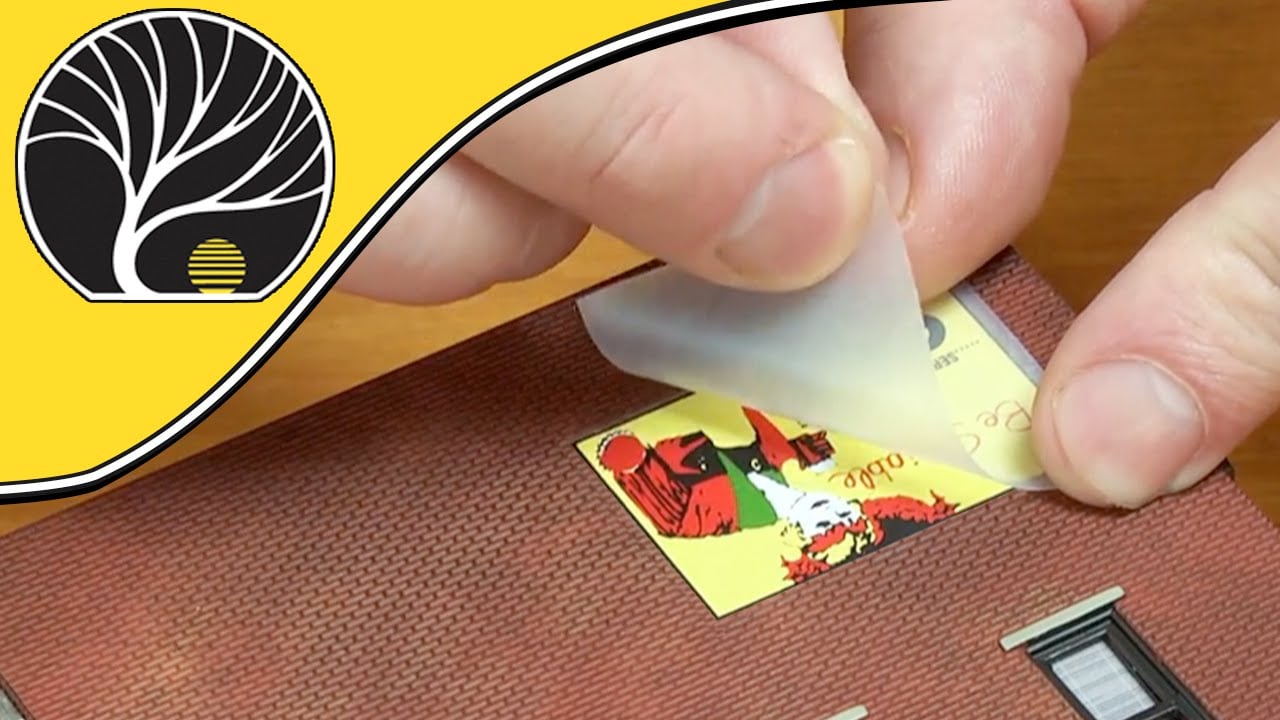Dry Transfer
“Dry transfer” refers to a method of applying text (such as Letraset) or images (decals) to a surface without using wet adhesives or liquid mediums.
- Place face down on surface where you want the text/image
- Position carefully (measure if necessary)
- Rub the back of the image with a burnishing tool (or a pen/pencil/coin etc.)
- Carefully peel off backing paper
- Gravure Printing: A high-quality printing process where images are etched or engraved into a cylinder or plate. The recessed areas hold ink, which is then transferred to paper. This method produces exceptionally detailed, continuous-tone images and is commonly used for magazines, catalogs, and packaging that require premium image quality.
- Block printing (wood cut / lino printing etc)
- Shapes cut into blocks made from wood, metal or linoleum;Ink applied to the remaining block surface;Block pressed onto the surface to make the print;Normally one colour, but can be more than one;Good for positive / negative images and repeating patterns;Appropriate for small and medium-sized runs, and printing on paper or card;
- Common uses:
- Handmade greeting cards.
- Screen printing:
- Stencil supported by a screen stretched tightly over a frame;
- Thick ink spread across the screen using a rubber squeegee;
- Ink forced through the screen and onto the paper;
- Non-printing area of the stencil stops the ink from passing through and prevents the background from being printed.
- Low output – only suitable for small runs;
- Difficult to achieve fine detail;
- Requires long drying time;
- Common uses:
- T-shirts;
- Plastic and metal signs;
- Point of sale displays;
- Posters.
- Letterpress printing:
- Relief printing method (i.e. image/text to be printed is raised above the non-printing background);
- Dense ink is applied to the raised image and pressed onto paper;
- Not often used now, as time-consuming to set up and make the plates, and there is only a limited range of fonts and styles.
- Good printing quality;
- Creates a debossed / indented impression
- Less paper wastage;
- High cost / slow process;
- Common uses:
- Wedding invitations;
- Letterheads;
- High-end stationery;
- Business cards.
- Flexography:
- Similar to letterpress, but uses a flexible plastic or rubber plate;
- High speed;
- Cheap to set up;
- Can use same presses as letterpress;
- Difficult to produce fine detail – good for simple designs.
- Common uses:
- Printing on materials like cellophane, polythene and metallic films:
- Plastic shopping bags;
- Plastic packaging for food.
- Simple designs printed onto to packages.
- Digital Printing
- Uses various technologies like inkjet or laser to apply ink or toner to paper.
- Inkjet sprays ink through tiny nozzles
- Laser heats toner (fine powder) and fuses it to paper
- Usually limited to standard paper sizes (e.g. A4, A3).
- Designed for general-purpose printing of text and images on paper.
- Uses various technologies like inkjet or laser to apply ink or toner to paper.
- Plotters:
- Primarily used for creating large-format designs.
- Traditionally used pens or other drawing tools to create images by moving across the surface of the paper – modern versions often use inkjet etc.
- Higher precision;
- Often slower than printer;
- More expensive, typically used in specialised fields like architecture, engineering, or graphic design.
- Common uses: technical drawings and designs; architectural drawings; posters.
- Plotter cutters:
- Uses thin blades that can be adjusted for depth and pressure of cut
- Many can print and cut (these devices typically use inkjet for the printing)
- Can cut only halfway through…so you can use to cut out stickers or labels etc.
- Creates cut-out shapes or patterns from various materials like sticky backed vinyl, paper, cardstock, or fabric
- Offset Lithography:
- Typically high-volume commercial printing method
- High-quality image reproduction
- Suitable for mass production
- Versatile for various materials and surfaces
- Uses three cylinders: a plate cylinder, blanket cylinder and impression cylinder. Based on principle that oil and water don’t mix. Plate cylinder has the image on it and is dampened with water: the water is rejected by the image and thus only remains in the areas around it. Plate cylinder is then inked and transfers the image (‘offsets’ it) to the blanket cylinder which then prints it onto a piece of paper fed between the blanket and impression cylinders.
- High set-up costs, but cheapest for general printing, if printing high volume.
- Not cost-effective for small print runs.
- Difficult to customize individual prints within a single run
- Common uses:
- High-volume production of posters, books, and packaging.
- Business cards, stationery, menus, brochures, posters;
- Magazines, newspapers;
- Designs on the nets of boxes for packaging, point of sale displays (as long as large quantity needed).
- Photocopying:
- Reduce / enlarge;
- Range of paper sizes and types;
- Back-to-back copying;
- Collating;
- Multiple copies.
[have a knowledge of commercial printing methods such as gravure, screen printing and lithography – IG]
[printing
○ digital printing
○ screen printing.]
[The different methods of printing and common applications for these methods, including:
– offset lithography
– flexography
– gravure
– sublimation printing
– pad printing.
The advantages and disadvantages of the colour separation method during printing.
The CYMK colour separation method. – A2]
[coming soon]

